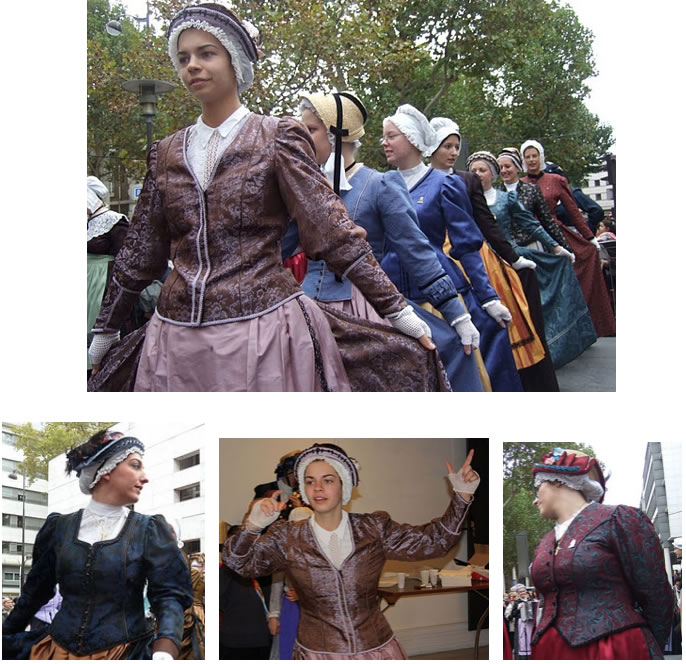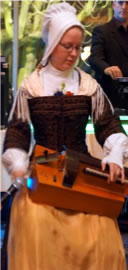
Musical instruments - Dances - Costumes
Musical instruments : the Accordeon
The
accordeon is appreciated in the halls of Bourgoisie in the middle of
XIXth century, and becomes a popular instrument a few decades after.
This way, it was perfectly integrated to traditionnal Auvergne music. From the beginning, accordeons split in two types : - chromatic accordeons producing the same tone pushing or pulling and allowing to play all scales ; - diatonic accordeons often smaller, producing different tones depending on the movement and allowing to play only in two scales, a major scale and its relative minor. The principle of the accordeon is to throw air which may sticks vibrate. Listen to a piece |
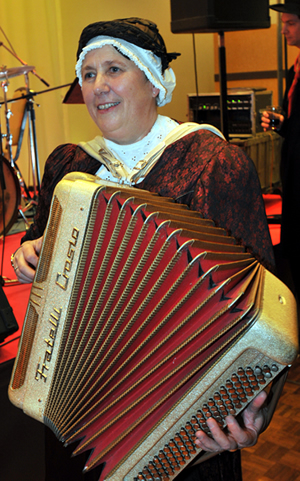 |
The Cabrette
The
cabrette or musette is very old (the musette was very famous in the end
of XVIIth century at the French King court) but the one we know and
practice today was born in Paris.
 |
Indeed,
the numerous arrival of Auvergnats in Paris in the first half of XIXth
century is an opportunity to organise balls. Somes improvements had to
be made, which gave birth to the cabrette we know today. The Golden Age
of cabrette is in the XIXth century. Auvergnats balls became very
famous and took the name of the instrument : " Musette balls ". The
difficulty to play cabrette is in the balance of the air in the
bag. Thanks to the bellows, the cabrette player feeds the bag with air ; pushing on this bag, the air throws out through the pipes : if there is not enough air, no sound is produced, if there is too much air, the note is wrong. Listen to a piece |
The Hurdy-gurdy
The hurdy-gurdy crossed centuries from the Middle Ages. Under Régence and Louis VXth reign (1715-1774), the hurdy-gurdy enters Paris lounges where it reaches the musette. Along time, it becomes quiet and comes back into light in the years 1840-1850 in Berry region where it will become the emblem instrument.
|
|
The fingering choiceThis fingering is essential to phrase the melodies, which allows to reduce the platitude effect coming from the constant noise of the hums. The hums are the lower register cords of the hurdy-gurdy : the notes are the same during the whole music tune. The accuracy, the quality of the sound, the rigour in the rythm must be constant concerns but the hurdy-gurdy player shall also give dynamics to interpret the dance.Listen to a piece |
 |
The Violin
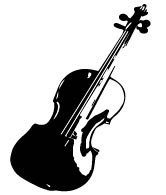 The
violin is born in Italy in the XVIth century. It is the highest-pitched
from bowed stringed musical instrument family, coming from viola da
bracchio ; it consists in four cords tuned by fifth (G,D,A,E).
Originally, the may role of the violin was to support vocal parts and
dance tunes.
The
violin is born in Italy in the XVIth century. It is the highest-pitched
from bowed stringed musical instrument family, coming from viola da
bracchio ; it consists in four cords tuned by fifth (G,D,A,E).
Originally, the may role of the violin was to support vocal parts and
dance tunes.
The technic and playing position is up to the player habit, possibly its morphology : against his chest, under the chin and in some cases against his hip. The bow is essential in the way to play, so much that some musicians consider they are playing two instruments : the violin and the bow. |
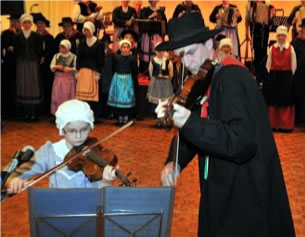 |
Dances : the Bourrees
The Bourrée is one of the oldest known dance. Its origin is lost in the mists of time. Antic historical documents testify that Bourrée was danced in 879.
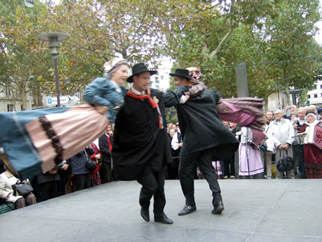
It has been introduced in the French Court by Marguerite de Valois,
wife of the King Henri IV, and known under the name
of « Reine Margot », where she is living
since Louis XIII reign.
In Auvergne and in Massif Central, Bourrée was dance till today. A
large variety of dances are grouped under the name of Bourrée, and
their rythms, depending on time and regions, was two or three-four
time.
You may meet this dance and its variants in about all the Massif
Central and border regions when it evolved according the population
disposition. But the noticed differences from one region to the other
are only superficial. All things considered, the step is the same
everywhere.
The Bourrée of the mountain-dwellers is executed by men with virile and rude disposition. It gives off a strength impression, almost violence and characterized by the regularity of the rythm, the vigour of the moves, the energic feet hit on the ground, by gestures inspired by ancient rites.
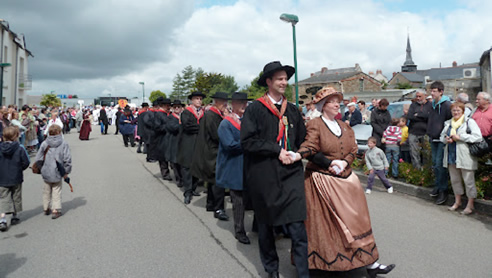 |
Costumes
